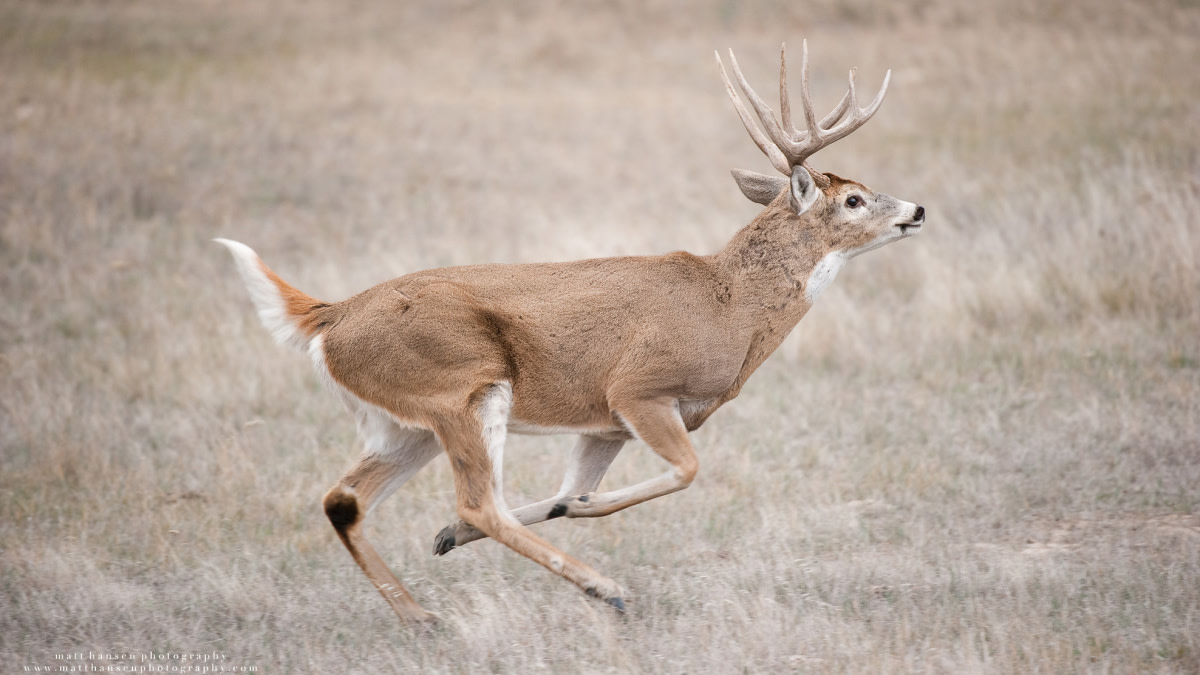
You’ve got questions. We’ve got answers (and if we don’t, we’ll make them up). Every day, fellow MeatEaters send us more than 100 emails regarding hunting, fishing, cooking, conservation, and more. So, we decided to publish a series dedicated to our favorite FAQs. This is Ask MeatEater.
Several years ago on a late-season muzzleloader hunt, I jumped a nice whitetail buck at close range in waist-high grass. As he bounded away, the deer made a 90-degree turn, cleared the tall grass, and momentarily offered a broadside running shot. The buck dropped his tail at the shot, but a sparse, intermittent blood trail confirmed what I already knew: It wasn’t a good hit.
I broke my own rule that day. Many hunters agree—at least in theory if not in practice—that it is ill-advised to shoot at running animals. Shots should only be taken when an animal is motionless or walking slowly and presenting a clear view of the vitals. By taking running shots, we greatly increase the chance of a miss or, even worse, a poor hit resulting in a lost animal that suffers a slow death. That’s true even if you practice shooting at moving targets.
Of course, there are all kinds of caveats to this rule. Small game hunters using shotguns routinely shoot at running rabbits and squirrels. Many bird hunters take things a step further by refusing to shoot at a stationary, earthbound pheasant but happily take more difficult flying shots. Sure, a shotgun sending dozens of pellets in a wide pattern makes it much easier to execute lethal shots on small, moving targets, but things change when it comes to shooting a single projectile.
So, when is it OK to take a running shot on a big game animal? Some would say never. But consider the classic whitetail deer drives in the Midwest and Northeast.
Hunters kill thousands upon thousands of deer on drives every year. You’d be hard-pressed to find one of those successful hunters who’d say shooting at a running deer is wrong. As a kid I participated in my share of drives, and shots on motionless deer were rare to say the least. Back then, downing a running deer was something to be celebrated, not discouraged. In many hunting circles, it still is. Still, of all the deer killed with running shots during deer drives, it’s hard not to imagine the number of deer that are wounded and never recovered.
Certainly there are rare crack-shots out there who can make running shots with confidence, but the vast majority of hunters don’t fall into that category.
A good guideline is the 90% rule. If you’re not at least 90% certain when you pull the trigger that the animal is going to die, you shouldn’t take the shot. Be honest with yourself and respect the resource enough to never take shots where you’re just hoping you hit the animal.
Personally, I feel the only time a hunter shouldn’t hesitate to take a running shot on a big game animal is when it’s running after you already hit it once. When an animal is wounded and still covering ground, it’s the hunter’s responsibility to end things as quickly as possible. Don’t hesitate to take a second or third shot if that’s what’s necessary to kill an animal. Wounded elk are notorious for running miles, but any poorly-hit big game animal can disappear over the horizon never to be seen again. When in doubt, keep shooting, even if the animal is running.
Speaking of doubt, I should have paid more attention to my own when I pulled the trigger on that whitetail buck—instead I reacted to the short shot distance and my unfilled tag. Fortunately, after several hours of grid searching, I found him expired in a bed nearly a mile from where I’d jumped him. The slug had barely managed to pierce his liver. I got lucky.






